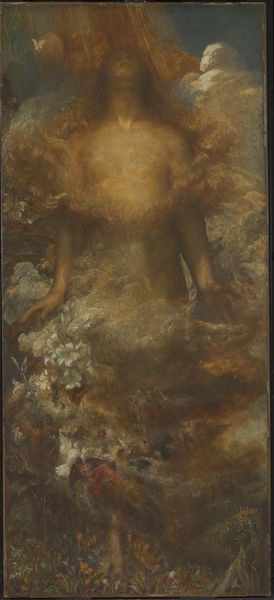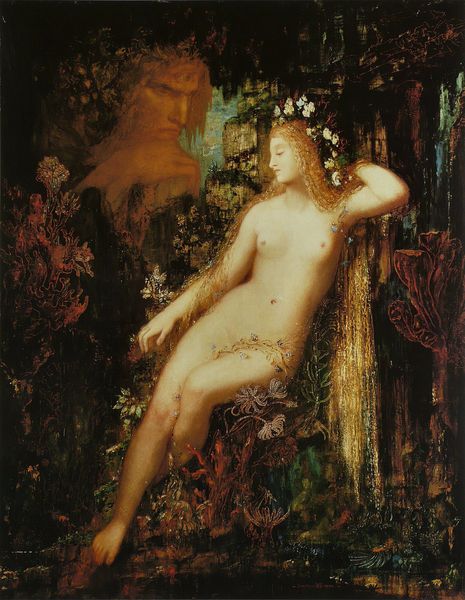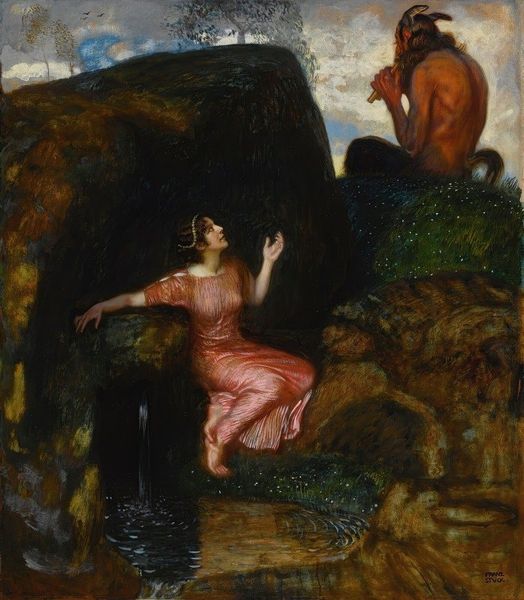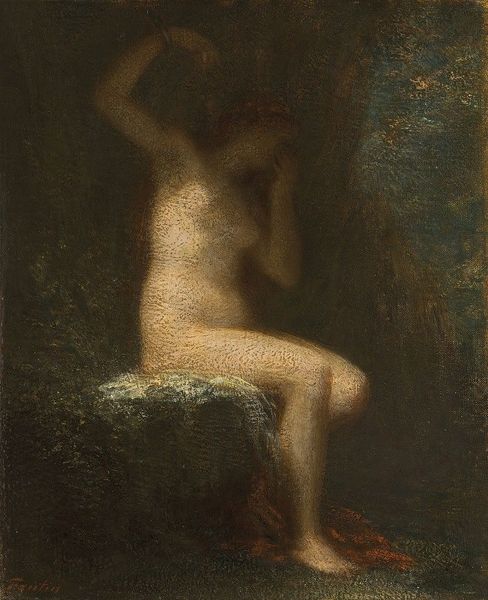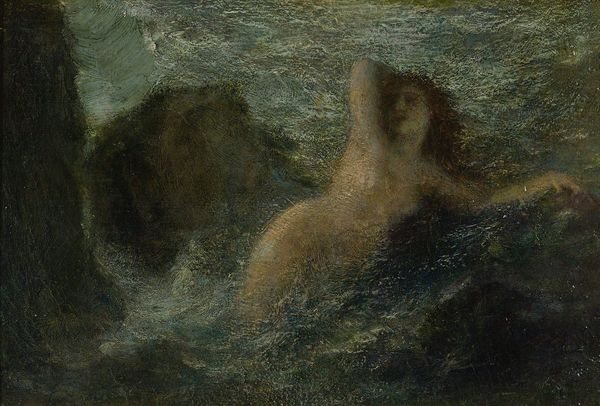
Dimensions: support: 2591 x 1194 mm
Copyright: CC-BY-NC-ND 4.0 DEED, Photo: Tate
Curator: This is George Frederic Watts's monumental "Eve Repentant," held here at the Tate. I find the scale of this painting quite impactful—almost overwhelming. Editor: Yes, its immensity is striking. The canvas itself suggests a certain grandeur of production, doesn't it? Consider the labor required to stretch and prepare such a surface. Curator: Absolutely. The materiality contributes to the narrative; Eve, seemingly ashamed, hides her face, a gesture loaded with socio-religious implications about female guilt. Watts is engaging with a very specific cultural understanding of sin. Editor: And the earth tones—browns and muted golds—speak to a return to the earth, to a literal grounding after the Fall. I wonder about Watts's studio practice—did he mix his own pigments? Curator: Perhaps! It all adds to our reading of Eve within broader narratives of shame and redemption. It certainly gives us a lot to reflect on. Editor: Indeed—from pigments to patriarchal structures, it's all interwoven here.
Comments
Join the conversation
Join millions of artists and users on Artera today and experience the ultimate creative platform.
tate 8 months ago
⋮
This painting is one of a group of three paintings Watts called The Eve Trilogy that represent Eve’s ascension to life, her temptation and her grief after her downfall. The paintings were originally conceived as part of a vast epic scheme called The House of Life, but later took the form of three independent compositions. The painting shows Eve stricken with remorse leaning against a tree. The heavy flesh and downward lines of paintwork suggest the burden of sin and guilt. Gallery label, November 2016
